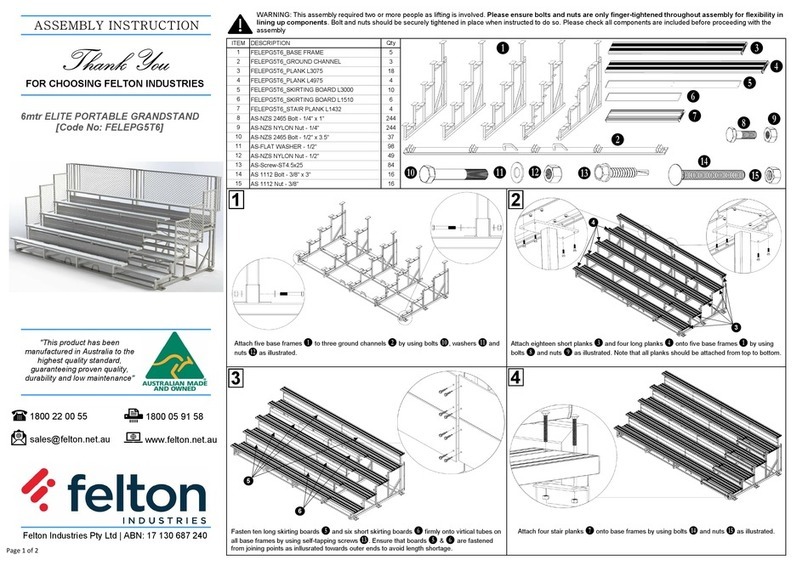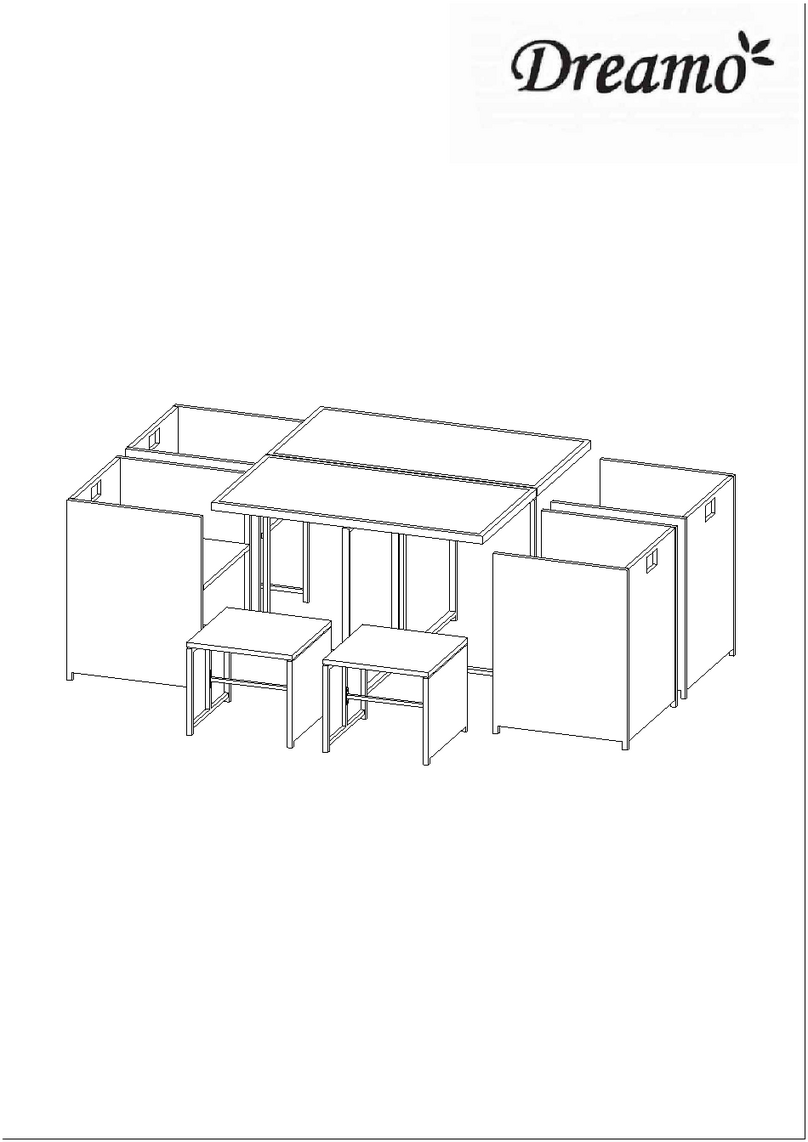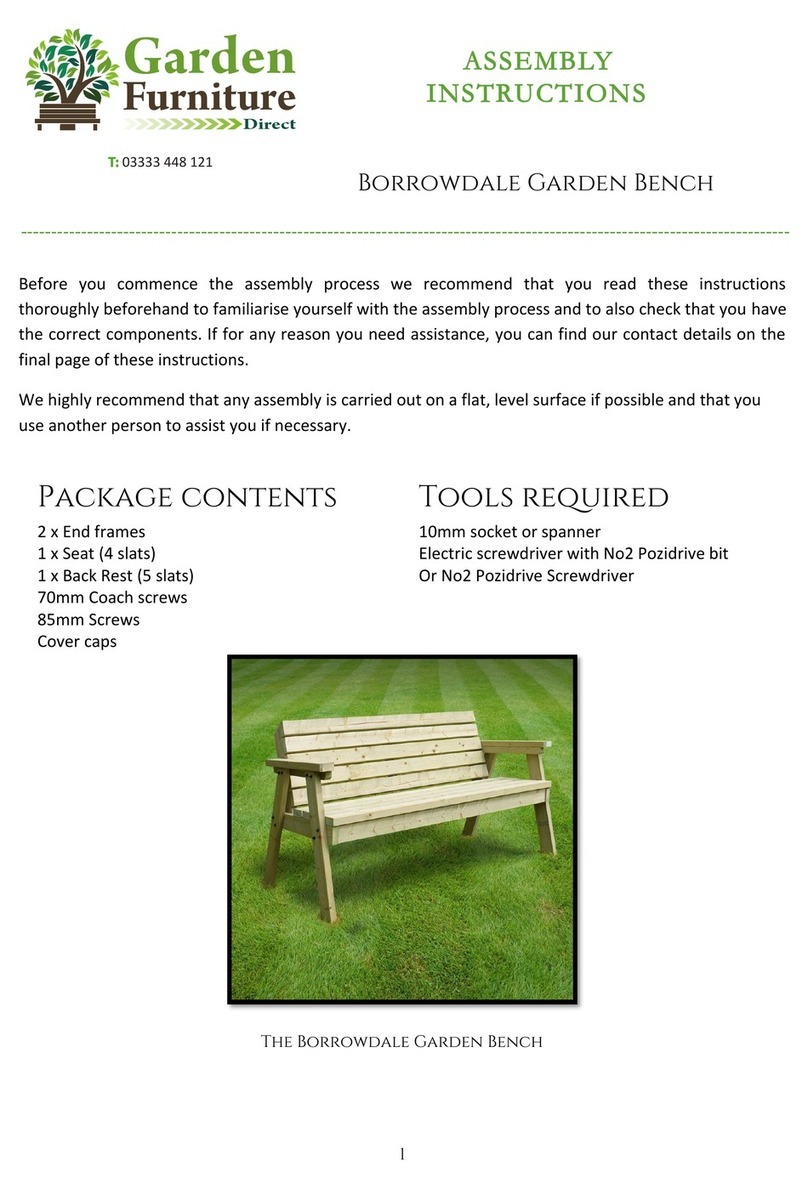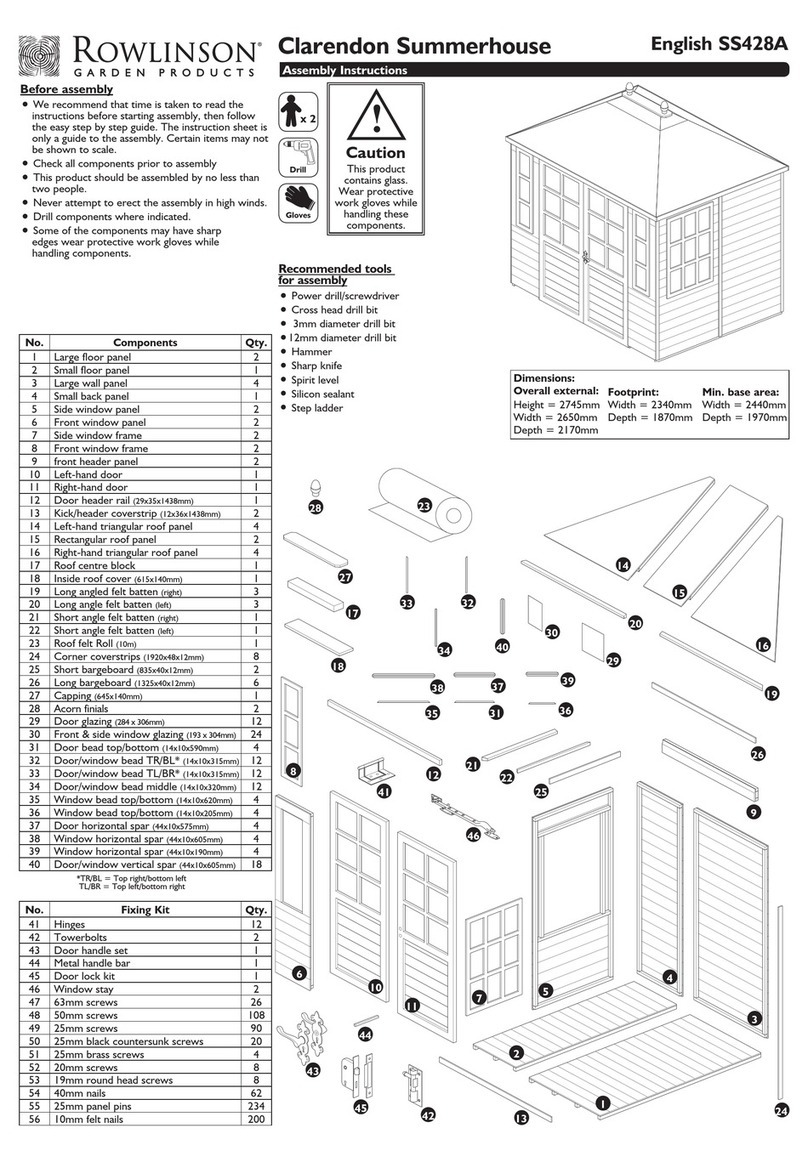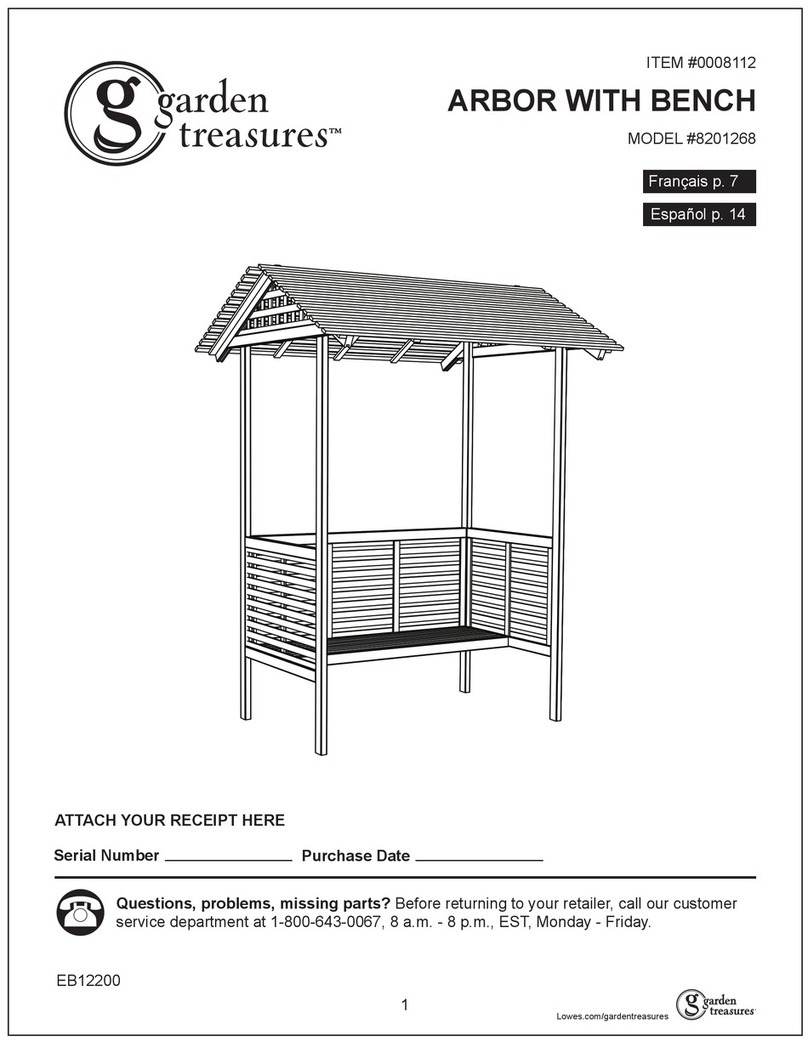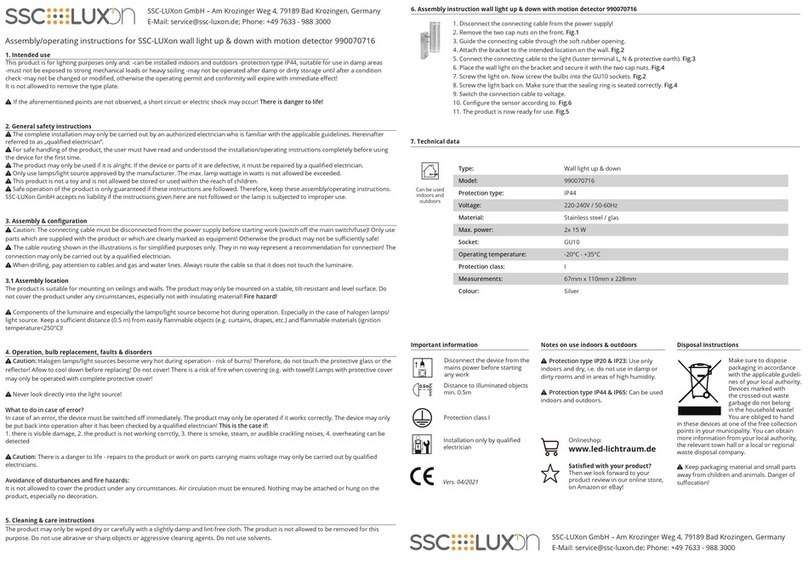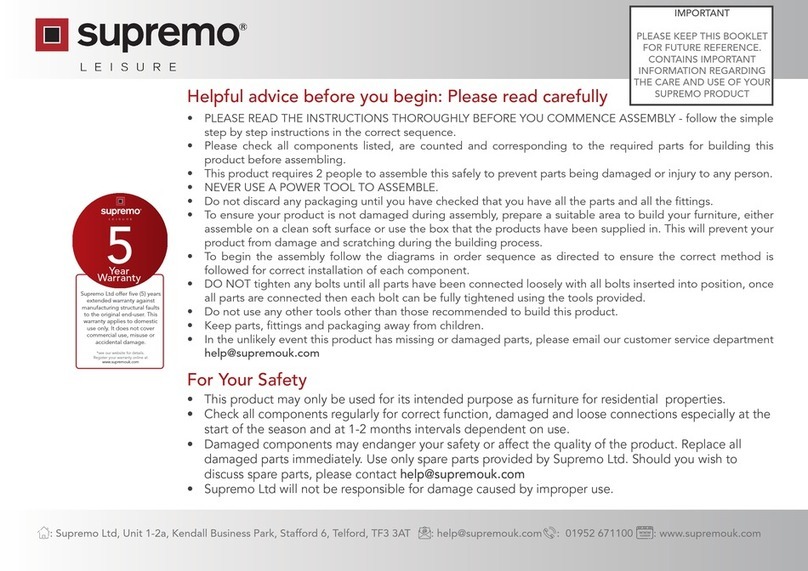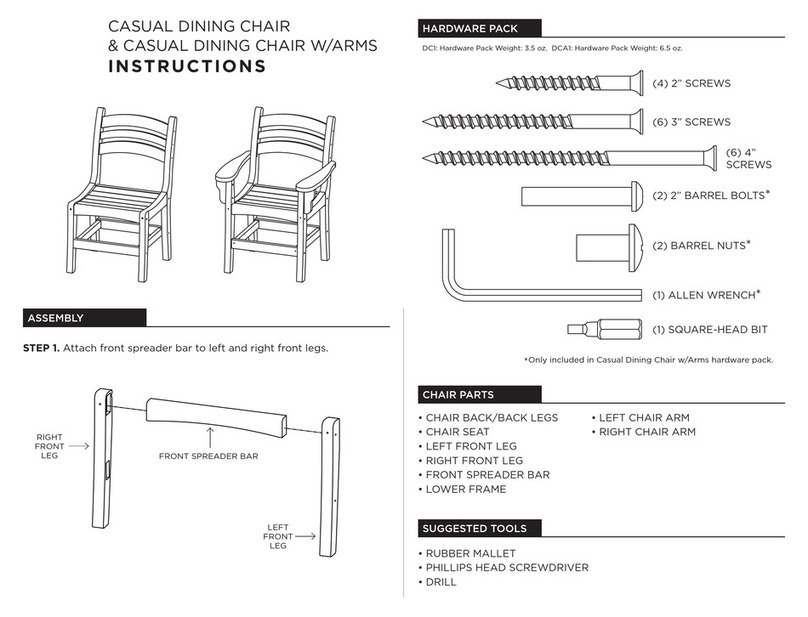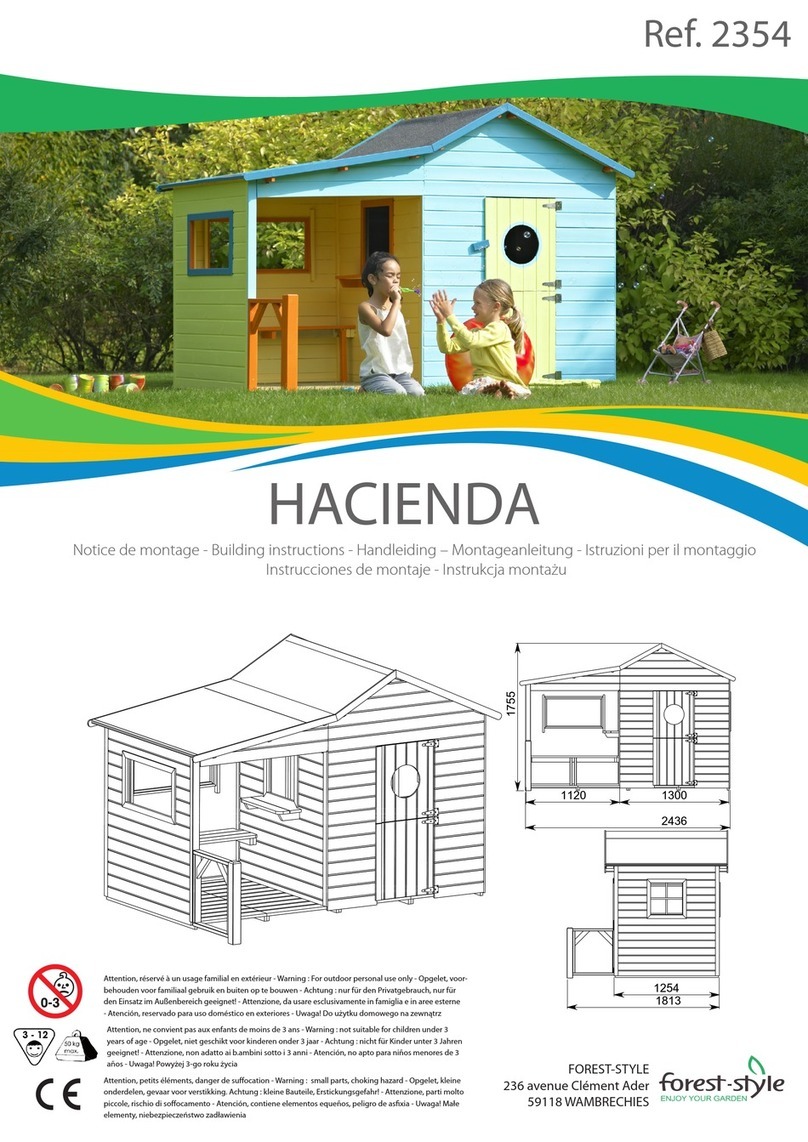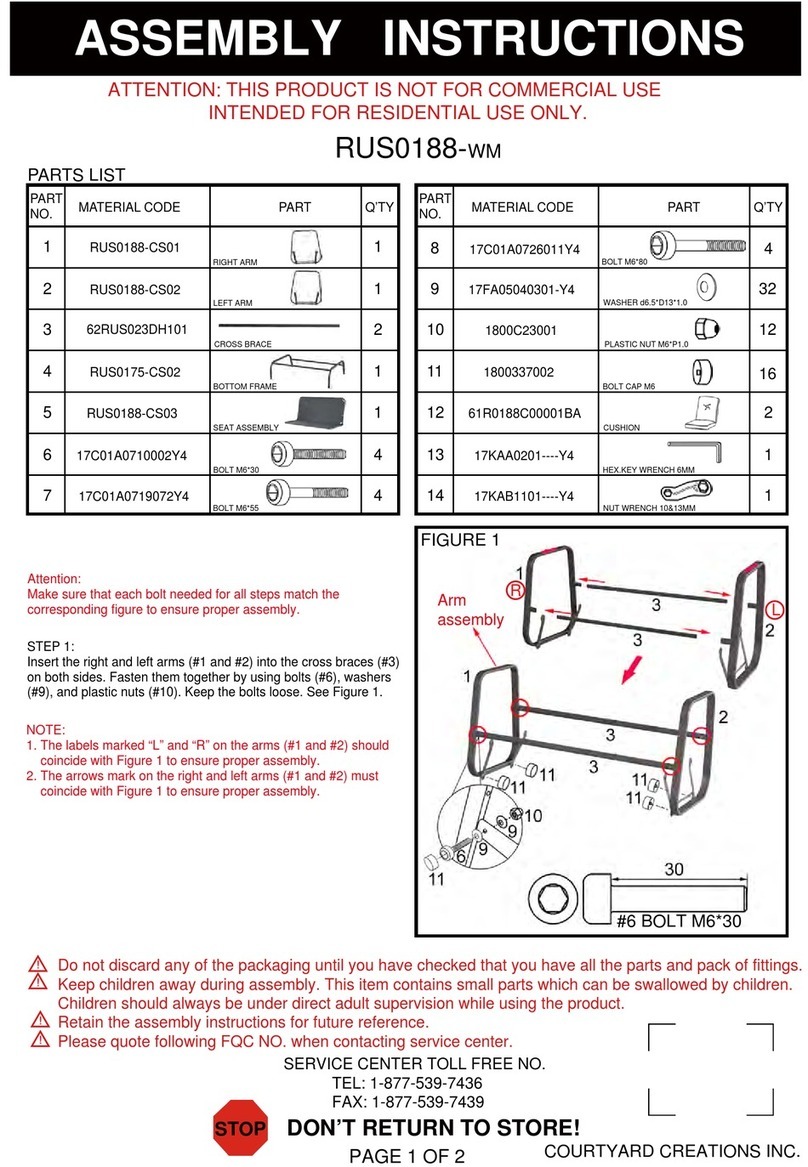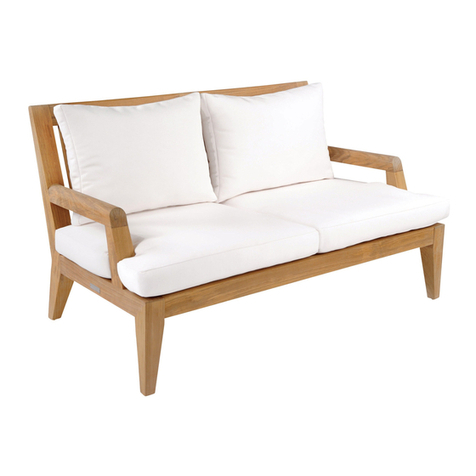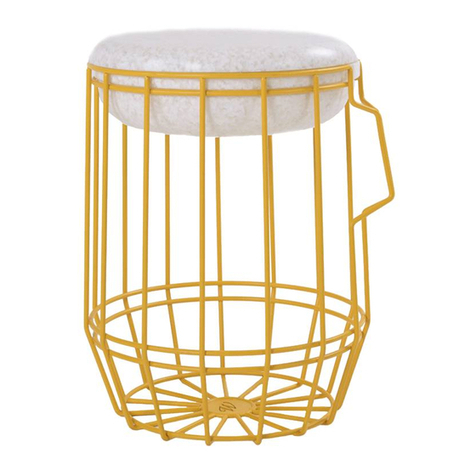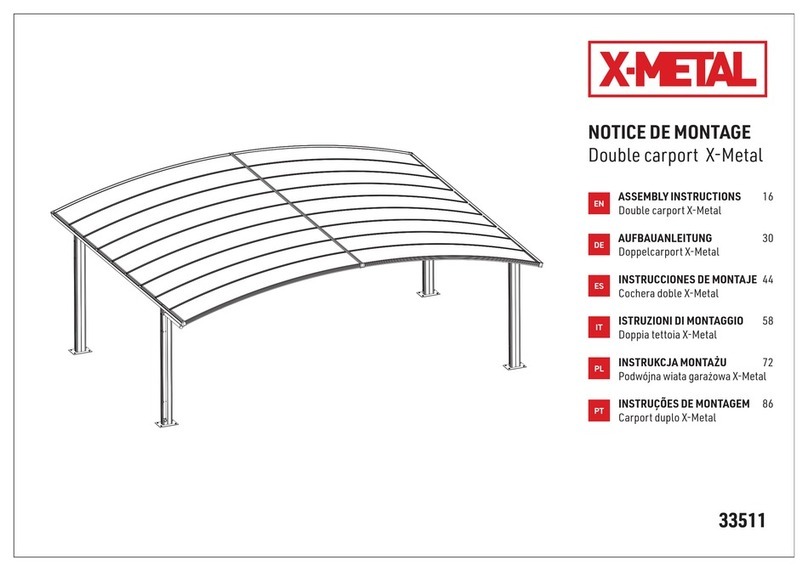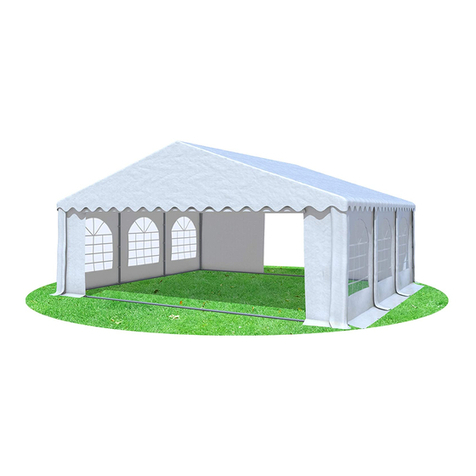14
MANUEL DE MONTAGE ET AVERTISSEMENTS
!!!!! S'il vous plaît lisez attentivement cette notice !
Important : gardez-la pour une utilisation future !
Chère cliente, cher client,
Merci d'avoir choisi un de nos produits et merci pour la confiance que vous avez placée en nous.
Afin que vous puissiez profiter de votre pavillon pendant une longue période, nous vous recommandons
d'observer les indications suivantes.
-Votre pavillon sera érigé en conformité avec les instructions d'assemblage. En particulier, assurez-
vous que les coins de la toiture soient soigneusement tirés au-dessus des jonctions des angles.
-Votre pavillon doit être ancré aussi avec les amarres et piquets fournis. Lorsque vous utilisez le
pavillon à un endroit sans surveillance (terrain de loisirs, terrain privé, chalet, terrain de camping ou
similaires...) il faudra enlever le toit et, le cas échéant, aussi les éléments latéraux.
En cas contraire, on risque que la tente entière, malgré un montage correct, soit endommagée ou
détruite en cas de vent intense et/ou de rafales de vent.
-Protégez votre tente contre le vent en utilisant toutes les fixations et options d'ancrage spécifiées.
Utilisez impérativement les piquets pour fixer les barres de pied avec base d'appui dans le sol. Le
même principe s'applique aux éléments latéraux. Vous devez tendre et sécuriser le toit avec les
cordes tendeuses.
S'il y a un vent intense ou des rafales de vent, il faudra démonter la tente.
-Les bâches en PE, à la différence des bâches en PVC, ne sont pas prévues pour une utilisation de
longue durée, ni résistent aux intempéries et conviennent donc uniquement une utilisation
occasionnelle et à court terme. Les tentes en PVC doivent être stockées pendant 24 heures avant
leur montage à la température ambiante, car cela rendra le matériau souple et le montage sera ainsi
simplifié. Les tentes en PE, ainsi que les tentes en PVC, ne doivent pas être montées à des
températures inférieures à +4 ° C, car à des basses températures, le tissu devient très dur et rigide,
ce qui provoque la rupture du tissu.
Le pavillon n'est pas résistant à l'hiver.
-Pour tous les dommages liés aux conditions météorologiques, tels que le vent et les bourrasques, la
pluie, la neige ou la formation de glace, nous n'assumerons en EN AUCUN CAS aucune
responsabilité.
-Ne jamais utiliser une flamme nue près de la tente ou à l'intérieur de la tente.
-Votre pavillon sert principalement de protection contre le soleil, contre les regards et contre la pluie.
Lors de pluies intenses, la tente ne devra pas être laissée sans surveillance et il faudra empêcher la
formation de poches d'eau en levant le toit à l'aide p. ex. d'un balai, afin que l'eau puisse s'écouler.
Les pièces d'usure comme les cordes tendeuses, les élastiques, les sangles, les pièces d'ancrage
ou les œillets sont exclues de la garantie. Une mauvaise utilisation du pavillon et le non respect
de nos instructions éliminera tout droit à la garantie.
Si vous suivez les instructions décrites ci-dessus, nous sommes convaincus que vous profiterez
pleinement de votre pavillon.
















